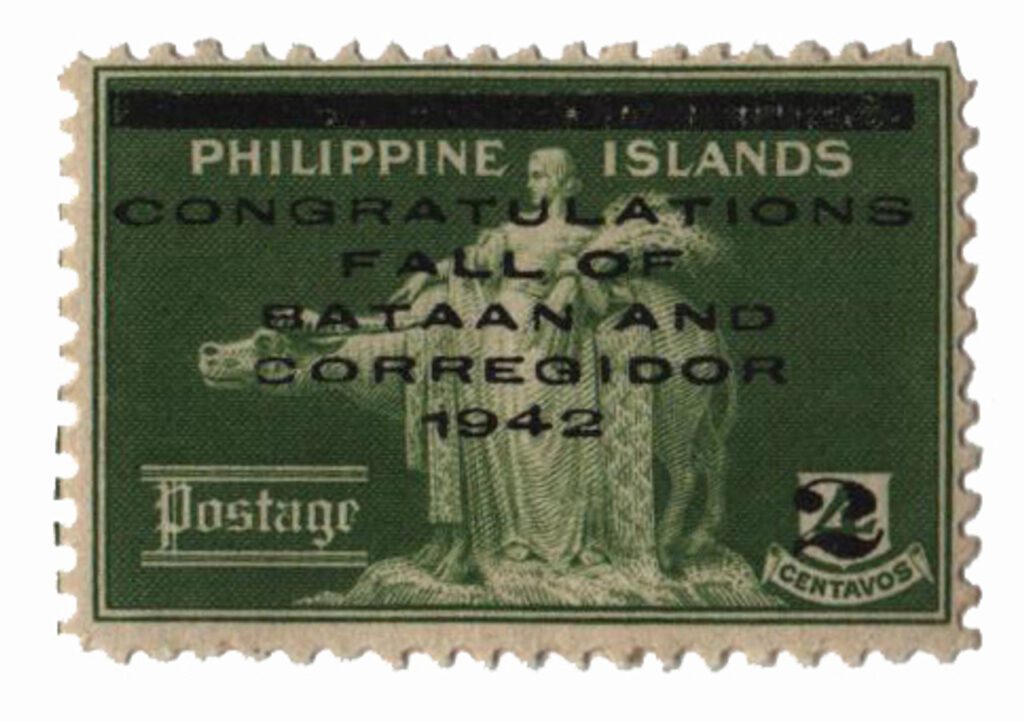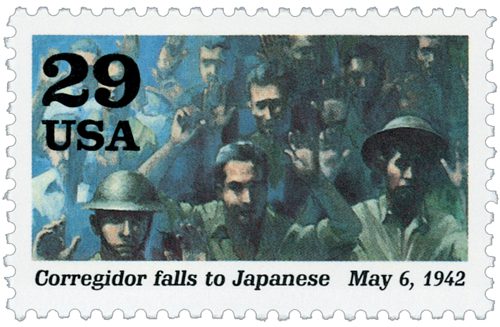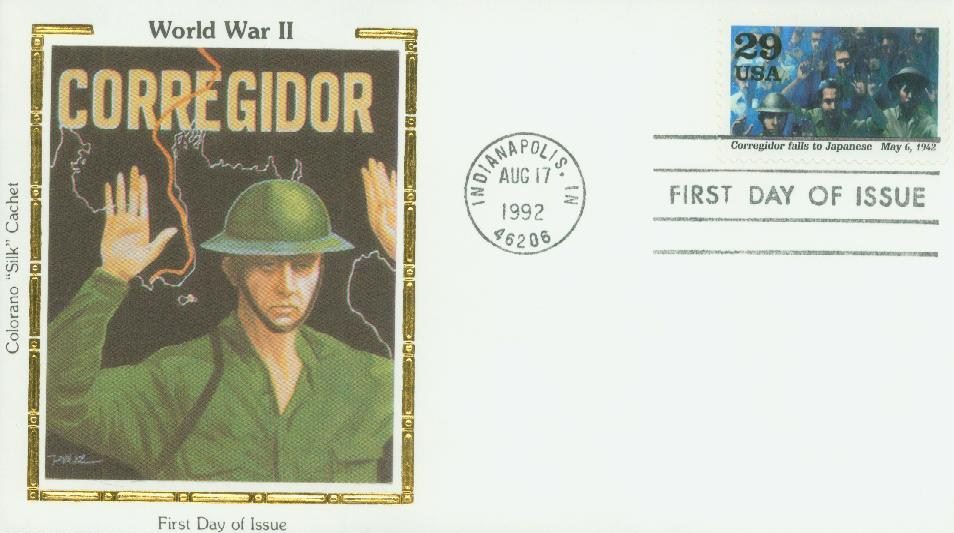
On February 16, 1945, the first of 7,000 American troops arrived at Corregidor, ready to retake the important Pacific outpost.
To prevent its complete destruction, Manila was declared an open city when World War II broke out. The Japanese began their invasion of the Philippines on December 8, 1941, ten hours after the Pearl Harbor attack. They destroyed every US aircraft on the ground, forcing the American naval fleet to withdraw.
Corregidor itself came under siege on December 29, 1941. After a two-hour bombardment, the Japanese destroyed or damaged the hospital, barracks, fuel depot, and officers club. The attacks on Corregidor continued for months. On March 11, 1942, General Douglas MacArthur escaped Corregidor but boldly stated, “I will return,” promising to come back and save the men he left behind.
Approximately 76,000 sick and starving American and Filipino defenders left in the Philippines surrendered on Bataan one month later. They were forced on a grueling march to Bataan, during which seven to ten thousand died or were killed by the Japanese forces in what’s been called the Bataan Death March.
American leaders saw Corregidor’s recapture as an important step in winning the war. So General MacArthur returned to the Philippines on October 20, 1944, with 174,000 men and 700 vessels.
The Battle for the recapture of Corregidor started on January 23rd with an aerial bombing to lessen the Japanese defenses. The aerial bombing lasted for seven days, during which time the US Navy also bombarded the shore.
Then on February 16th, General MacArthur’s dangerous plan to surprise the Japanese went into effect. The island was hazardous for paratroopers to land on – especially on the large hill, which was why the Japanese didn’t expect them. This was the vantage point they needed to control to win. At 8:30 that morning, 1,000 paratroopers started to drop from the sky toward the hill named “topside.” They would help defeat the Japanese by taking away their lookout. Then the Japanese wouldn’t have the advantage of seeing and controlling sea bomb attacks.

Though American forces caught their enemy by surprise, the Japanese quickly regrouped and put up a stiff defense. Around the same time, American infantry waded ashore to establish a beachhead. They spent the next eight days holding off banzai charges, mortar, and suicide squad attacks. At one point, a group of Japanese troops were trapped in a mountain and chose to blow it and themselves up, rather than surrender. Similar explosions occurred around the island for several days.
The last major conflict was securing Malinta Hill, which took a week of fierce and courageous battle. In the end, the Japanese could no longer form organized attacks and the US dominated the small pockets of resistance.
Corregidor was declared secure on February 26. The island’s harbor was ready for Allied shipping by March 1.
Click here for more Philippines’ Japanese occupation stamps.
| FREE printable This Day in History album pages Download a PDF of today’s article. Get a binder or other supplies to create your This Day in History album. |
Discover what else happened on This Day in History.






Interesting to learn what an arduous battle it was to retake the island. Regrettably, much about MacArthur’s Pacific campaign has faded away since the end of the war. More is known about the war in Europe and Admiral Nimitz’s campaign across the Central Pacific than about the South Pacific. “Tis a pity!”
As I started reading, I expected to eventually read about the Bataan death march. If memory serves me right, prisoners from Corregidor’s fall were subjected too. I knew a surgeon in Houston who survived the death march. Also I wonder where McArthur symbolically waded ashore.
While the japanese consider suicide an act of bravery, it has always been and will always be, in life and in war, an act of cowardice. Their brutal attacks, including the rape and murder of hundreds of thousands of Chinese, the sneak attack on Pearl Harbor and the Bataan death march, just to name a few, were just an introduction to what was to come. In the end they paid dearly for their war crimes but in my opinion, not enough.
It seems that all those people that two years ago were going on about how much they loved these history lessons from Mystic are conspicuously absent in 2019.
Oh, there you are!!!
As is always true, your history lessons are very informative and well written. I think the military value of retaking Corregidor was out weighed by McArthurs desire to restore his reputation by fulfilling his promise. The island could have been bypassed and starved to death by naval blockade just as the Japanese caused the Americans to surrender in 1942. McArthur and Nimitz both used Island hopping and dominant Allied AirPower to retake and defeat the Japanese in the SW Pacific.
When you consider the horrendous war crimes of the Japanese against China, Korea, Vietnam, Philippines and Allied troops and prisoners. I do not believe they were punished or justice served when you compare them with the post war treatment of Germans by the war trials and destruction of entire cities and their population. Most allied prisoners of the Japanese did not survive. Only less than 10% of prisoners of the German-Austrian-Bulgarian-Romanian Forces died in captivity. No one knows how many thousands of the German Wehrmacht prisoners held, starved and frozen to death during the 15 years that the Soviets kept and worked to death their POWs. One of my Bundeswehr German language professors at West Point was one of those few officers that survived 14 yrs in Siberia as a POW after being wounded on the Eastern Front In 1942. Another of my WP professors was a child civilian POW of the Japanese in Manila for 4 years during which his father died. Amazing tales of luck and will to survive.
Totally agree. There should have been so many more punished.
I agree that they should have been punished severely. They are no better than the Nazi Germans. But what did we do but rebuild their country and look at it today. My grandfather was a Seabee inWW2 who went in with the first wave of Marines on Guadalcanal
The fall of this island is very important to those of us who are Texas Aggies. We lost many Aggies here, and Gen. Moore, an Aggie, was the commander forced to surrender. The most famous Texas A&M Muster ever held was held here after the recapture, and that flag is held at the University Former Students Building is a place of highest honor
Once again, as every day, thank you for the history lesson and associated stamps. If anyone is interested in this subject of WWII, I recommend the book, ‘With The Old Breed’ by Eugene Sledge. First person account of this and more.
So many brave men who died and survived in all the war years.
So sad now.